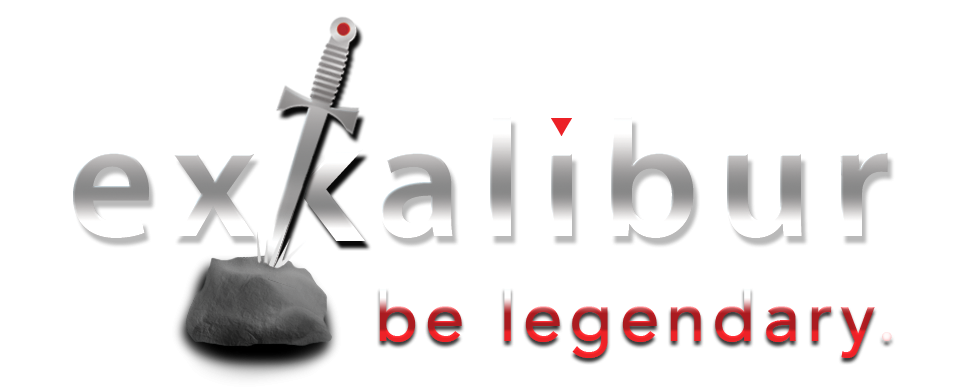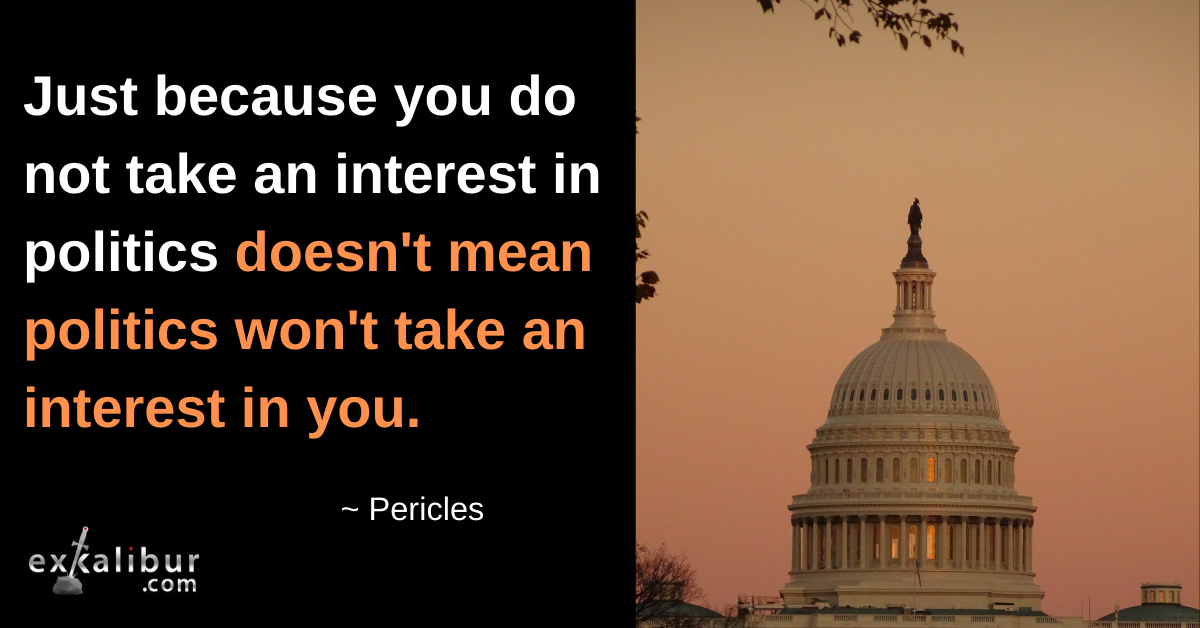
I fulfilled my civic duty and voted. I hope you have, too.
At least we can agree on one thing ….. thank God the Presidential Election process is finally coming to an end … and farewell to the TV ads that are getting on our last nerve.
That euphoria won’t last long, though, will it? Tomorrow, we’ll awaken to inevitable disputes, bitter wrangling and the endless name-calling that has uniquely marked this election.
During this process, however, it dawned on me that there is one issue in our increasingly cumbersome voting process that’s getting little attention and yet is the one that besets every individual voter. That’s what I want to evaluate.
There’s a lot to be done to reform the electoral process … but before I get to what I believe is the #1 Electoral Reform Issue No One is Talking About, let me take a moment to review some of the major issues we’re facing.
We’ll have a little fun along the way with a few quotations that take a poignant look at our political process.
All of These Electoral Reforms are on the Table

I’m sure you can already name several of the many electoral reforms that clutter the landscape. Even the most informal survey will turn up some of the major challenges to the fully representative voting system we expect.
Every time a Presidential election rolls around, we think … finally, we’ll get some of these reforms in place … but our track record in implementing these reforms isn’t too good, is it?
1. Voter Fraud Will Rear Its Ugly Head
Inthe immediate aftermath of Tuesday’s election, head for shelter from the hailstorm of accusations and misinformation about voter fraud and mail-in ballots that will rain down and dominate the national conversation.
This issue has been hyped like never before.
Hundreds, and by some reports, thousands of lawyers have been hired by both sides to brace for the coming legal battles
The chance that this collection of lawyers will do nothing is as unlikely as a bridal gown at a rodeo, so count on even more lawsuits of all types, shapes and sizes for months to come.
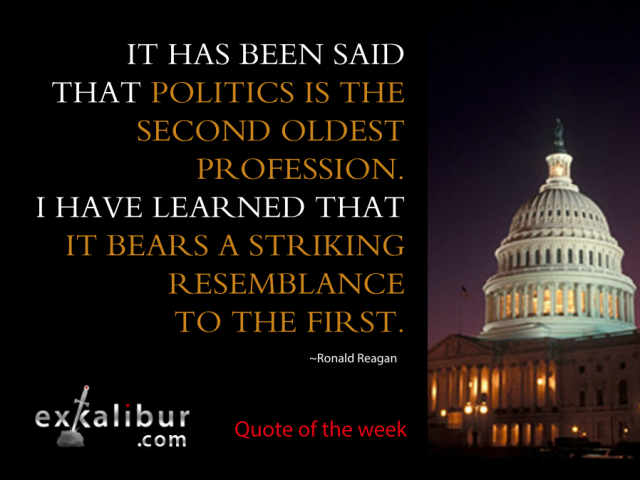
2. Foreign Interference in Our Elections
Experts seem to agree that cyber-terrorism will continue to be a challenge as the Internet extends its domination over every facet of our lives. (You can stay current on these threats and how they’re being addressed at the Homeland Security Cybersecurity site.)
This is a complex threat that has proven to be an effective tool to disrupt our elections. It’s also an ongoing battle that may never end as technology advances and new vulnerabilities are exposed.
“Relying on the government to protect your privacy is like asking a peeping tom to install your window blinds.” ~John Perry Barlow
3. Reform the Electoral College.
There is already a deep reservoir of ideas and proposed constitutional changes to the 12th Amendment to reform the Electoral College, and it will be one of the major themes certain to gain momentum following this election.
In fact, there is no other subject of constitutional reform that exceeds the “more than 700 proposed amendments to modify or abolish the Electoral College”.

Given what’s required to amend the Constitution … 2/3 of both houses of Congress and 3/4 of all the states (38 of 50) must ratify the amendment… it’s a mighty high bar.
That’s exactly what the Founders intended. Changes to our Constitution shouldn’t be easy … and in our highly partisan environment, they won’t be.
4. Citizens United & Campaign Finance Reform

The Supreme Court’s decision in Citizens United v. Federal Election Commission in 2010 may have dealt a death blow to campaign finance reform.
In short, the Court held that the “free-speech clause of the First Amendment prohibits the government from restricting independent expenditures for political communications by corporations, including nonprofit corporations, labor unions and other associations”. (Wikipedia)
So, the floodgates have opened. While estimates vary, the Center for Responsive Politics carries this mind-bending headline:
“2020 election to cost $14 billion, blowing away spending records.”
Most of us would agree that getting big money out of politics would level the playing field, but with the prevailing Citizens United case, it seems unlikely.
5. Gerrymandering?
Gerrymandering is a practice that gives an unfair advantage to a particular party or group by manipulating the boundaries of voting districts.
Check out a few breathtaking examples of the shape of some voting districts across the country. No more evidence needed about this widespread abuse of power.
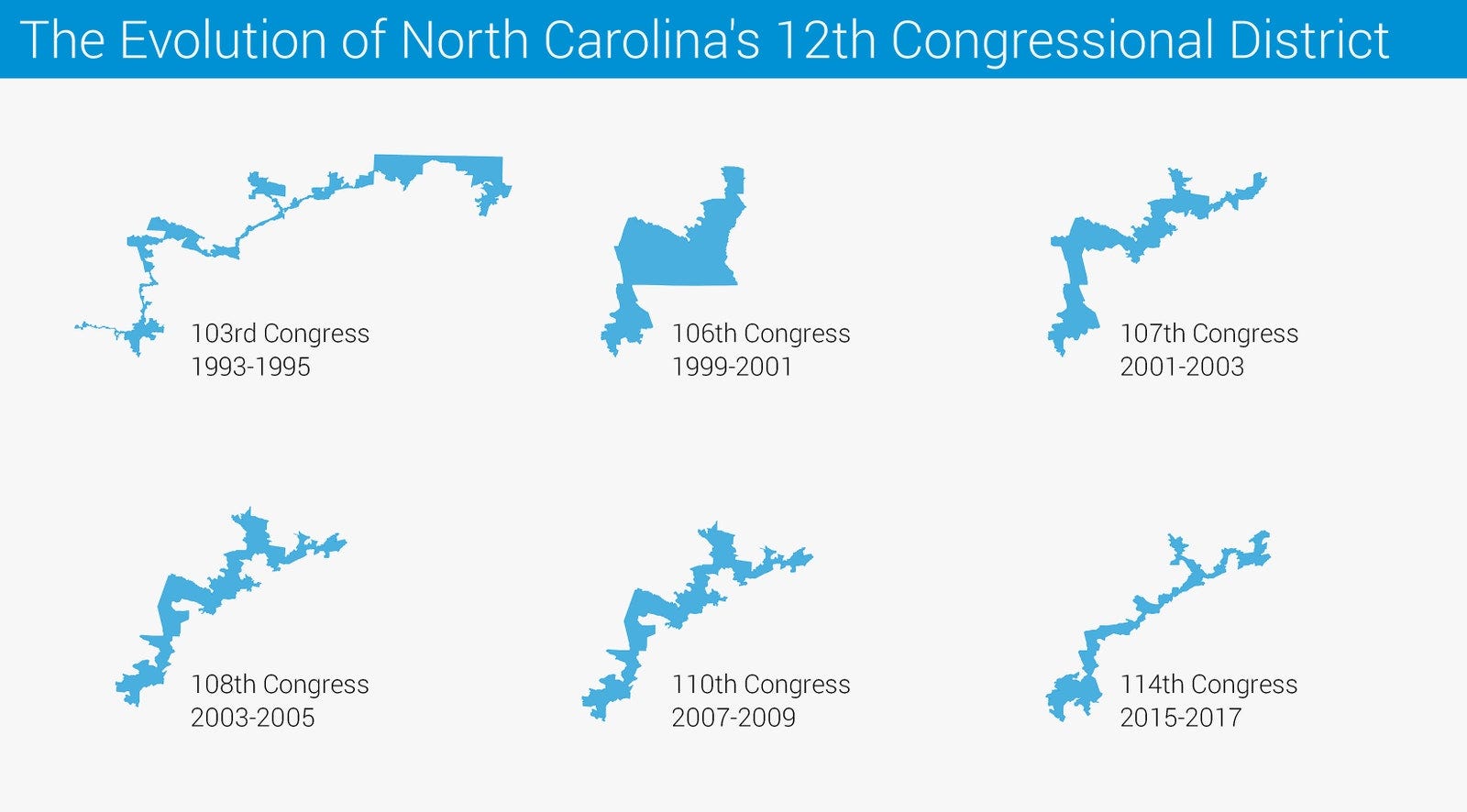
A few years back, a geographer created data visualizations of every congressional district in United States. You’ll find other interesting examples in America’s most gerrymandered congressional districts.
A simple internet search will also turn up numerous examples.

6. Term Limits? Couldn’t Happen Fast Enough.
When have you ever seen those in power restrict their powers?
That’s what I thought. Never.
IMHO, the need for term limits is unarguable. But, it’s not just to disrupt the influence of special interests and their intimate relationships with longtime lawmakers.
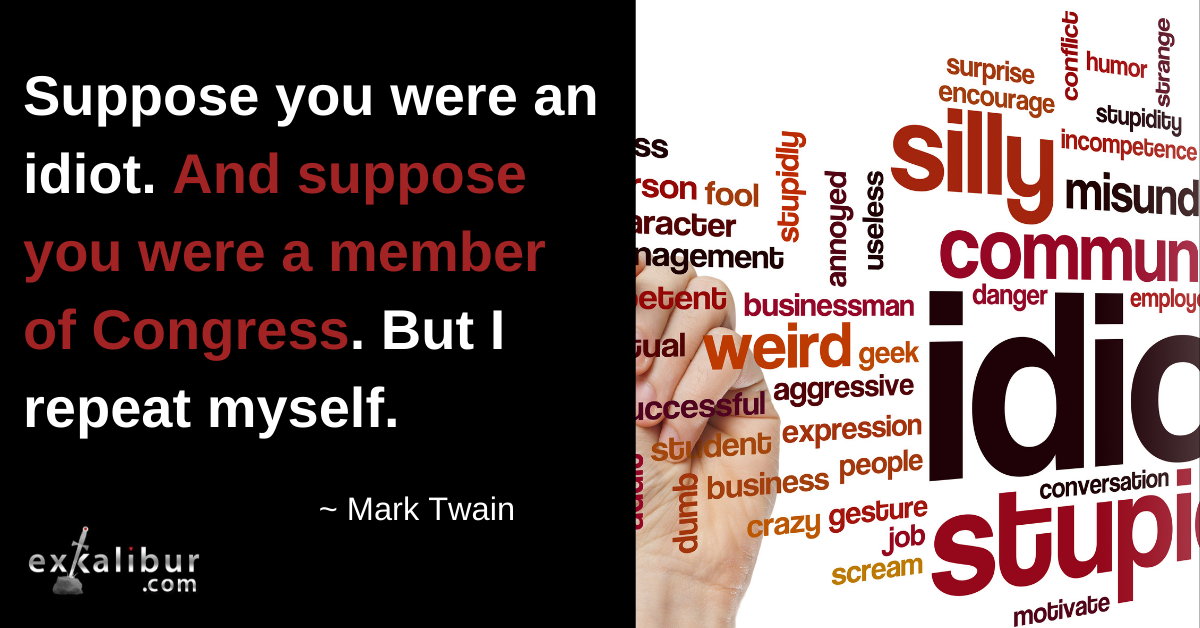
It’s also to inject fresh ideas and renewed energy into the withering and ossified legislative bodies, both in Congress as well as state and local bodies.
Here are just a few examples from both parties, starting with the longest serving senators. You can find the length of service for the 25 longest serving members of the U.S. Senate here. A full list for all Senators can be found here.
- Patrick Leahy (D, VT) — 45+ years. Age 80.
- Chuck Grassley (R, IA) — 39+ years. Age 87.
- Mitch McConnell (R, KY) — 35+ years. Age 78.
- Richard Shelby (R, AL) — 33+ years. Age 86.
- Dianne Feinstein (D, CA) — 28+ years. Age 87.
You’ll note the age of these Senators as well, further suggesting the need for fresh blood, particularly in leadership positions.
“People come to Washington believing it’s the center of power. I know I did. It was only much later that I learned that Washington is a steering wheel that’s not connected to the engine.” ~Richard Goodwin
That’s not to say that seniors can’t make meaningful contributions, but without term limits, the length of Senators as well as Representatives, will be no different than the Supreme Court or the Pope … forever until they say otherwise.
7. Fake News

This term, properly used, refers to news reports that are false, fabricated or with no verifiable sources or facts. Today, it’s overused and seemingly applies to anything we don’t like or with which we disagree.
It’s not an insignificant issue, though, and ties closely to #2 above, with respect to foreign interference in our elections. It’s also a growing challenge for the social media stalwarts that are expected to be reliable fact checkers for every word shared on their sites.
We have a long way to go here, with significant First Amendment issues about who is allowed to say what and where, and what kind of restrictions, if any, should to be imposed.
Where Does That Leave Us?
With a handful of big-time challenges that threaten every facet of the electoral process.
- Voter/Voting Fraud
- Foreign Interference
- The Electoral College
- Citizens United & Campaign Finance Reform
- Gerrymandering
- Term Limits
- Fake News

When I look at this list of 7 significant issues, and I know there are more, I’m left with this impression.
Reforms of the Electoral College and Campaign Finance will be left to the federal government, since these issues will ultimately require a Supreme Court decision.
The challenge with the other five issues — Voter Fraud, Foreign Interference, Gerrymandering, Term Limits and Fake News — is that none of them has a single locus. Each of them is a widespread and deeply rooted issue that infects the electoral process at every level … individual, local, state and federal.
Fixing any of them will be like trying to nail mercury to the wall.
But, before we get to the #1 Electoral Reform Issue No One is Talking About, we still need to lay a little more groundwork.
Voter Knowledge and Engagement
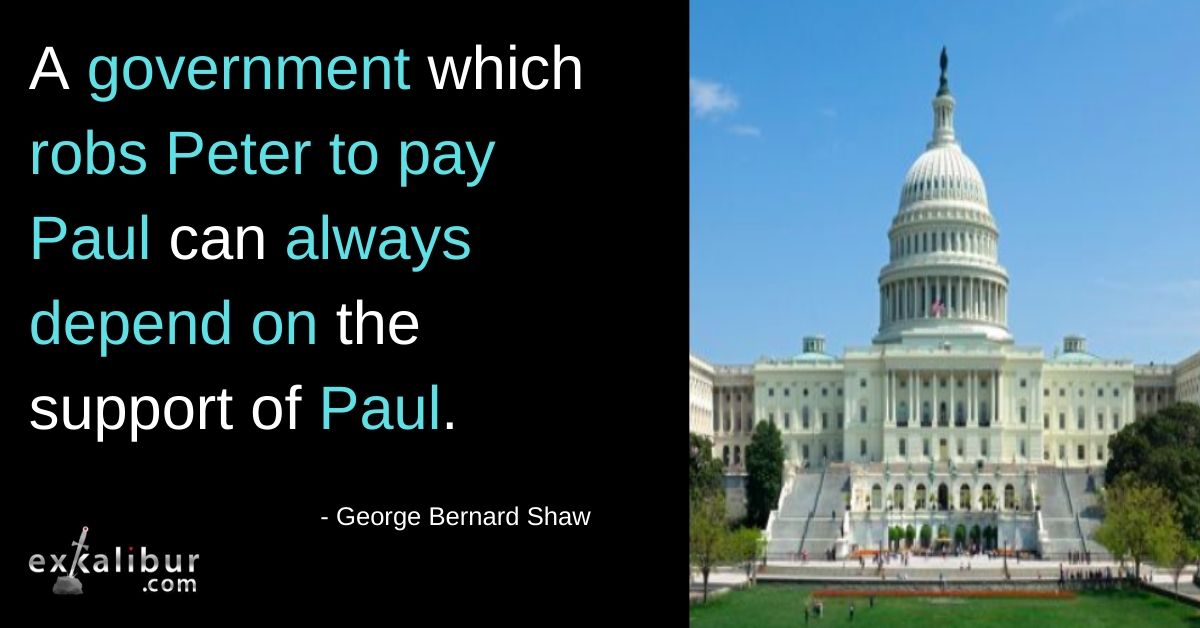
Measuring Voter Knowledge
To achieve the goal of true representative government where every vote counts, every vote also should be meaningful. To achieve that, the knowledge of the average voter, as well as their engagement in the political process, is essential.
There have been many attempts to measure voter knowledge, with many complex statistical studies coming from academia. Here’s just one of the conclusions you can find in the literature:
Many Americans are uninformed about the positions of the major political parties on key issues, and this lack of information distorts their ability to translate their preferences into partisan preferences and vote choices. (Electoral Studies)
- You can also read Measuring Voters’ Knowledge of Political News from Columbia University, another more exhaustive and rather complex study.
For now, suffice it to say that the average American voter has a long way to go to understand the issues that are presented during each election cycle.
What About the Naturalization Test?
Of course, we could insist that before voting, citizens would have to pass the Naturalization Test required for non-citizens to become a U.S. citizen.
While the United States Citizenship and Immigration Services reports that as of March 2019, the overall national pass rate is 90%, that result represents the result of hopeful U.S. citizens who have studied hard to make sure they pass.
“The best argument against democracy is a five-minute conversation with the average voter.” ~Winston Churchill
I seriously doubt that the average American voter could pass the Naturalization Test. (If you’re interested, you can find the 100 history and government questions and answers here. You have to answer 6 of 10 questions accurately during an interview. It is not multiple choice. You can take the practice test here.)
Our Knowledge of State Election Laws
To further illustrate our limitations, here’s another example measuring Americans knowledge about state election laws.

Voter Qualification
Unfortunately, our history of establishing advance criteria for voting eligibility has been applied to deliberately discriminate against defined segments of the electorate.
As a result, many factions continue to strongly oppose any kind of screening mechanism for voting eligibility. For my part, I don’t think it’s asking too much to expect a minimal understanding of civics for citizens voting in our elections
We expect prospective U.S. citizens, many of whom do not speak English as their native language, to pass that test.
Why shouldn’t the same apply to all citizens?
What About Our Record for Voter Engagement & Turnout?
The Public Religion Research Institute (PPRI) Is a nonprofit, non-partisan organization conducting independent research at the intersection of religion, culture and public policy. According to the Voter Engagement Scale they developed:
- Roughly one-third (34%) of Americans are Consistent Voters,
- Fewer than one-quarter (23%) are Presidential Voters,
- 27% are Irregular Voters, and
- 16% are Non-Voters.
Not an encouraging report.
It does appear, however, that voter turnout in 2020 will exceed previous years, which would be a welcome change.

We Don’t Set a Very High Standard
For the record, we also don’t set a very high standard for voter turnout compared to other countries in the world.
We rank #26 in the chart below.

Quick Summary
For now, that’s a quick summary of some of the biggest issues we face in reforming our political process.
Yet, with all of these issues, they still fall short of my greatest concern.
It’s an obstacle that creates such an insurmountable individual burden. Until we find a remedy here, we’ll never achieve meaningful participation by all eligible voters regardless of reforms in these other areas.
That’s one of the major reasons we see an endless barrage of annoying TV ads. Advocates know people aren’t going to study or even understand the voter guides.
The result? Partisan messaging and manipulation replaces voter education and knowledge
So, What’s the #1 Electoral Reform Issue No One is Talking About?
The Size and Complexity of the Ballot

Allow Me to Make My Case.
Tobe clear, I’m specifically talking about the San Francisco and California ballots, although they are only examples of a voting process run amok across an increasing number of states and localities.
Several studies on this issue have been done and we can look forward to even more.
Ballot Question Readability and Roll-Off: The Impact of Language Complexity is but one example published in Political Research Quarterly. Here’s their conclusion where “roll-off” generally refers to people skipping questions they don’t understand:
“In sum, our results demonstrate the consistent and negative impact that poor readability has on roll-off. The results of our analysis indicate that in addition to previous explanations of roll-off, readability of the question has strong Influence on participation in direct democracy. The problem indicates serious issues with direct democracy as currently practiced.”
The City & County of San Francisco Ballot

This document … get ready for it … is 232 pages long!
Below is the Table of Contents.

Here is a random shot of one of the pages.
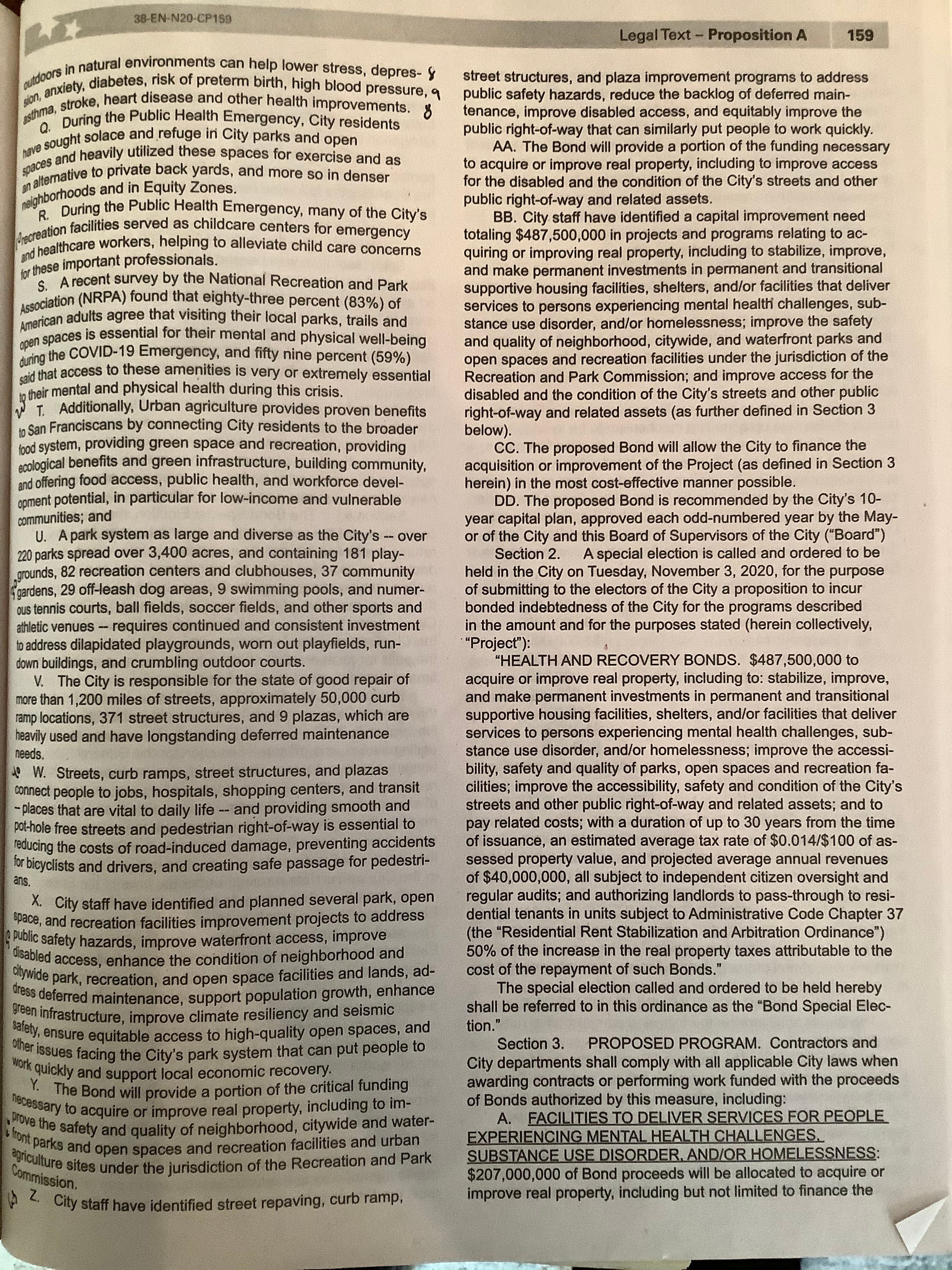
Easy reading, huh?
Next is the California General Election Information Guide

This one’s a little shorter. It’s only 111 pages with pretty much the same 9 point font size.
Let’s Do Some Simple Math Using these Examples

The San Francisco City & County Guide
Ilooked at several sample pages. Each column has about 8–9 words/line and about 63 lines on the page in each column. Using an average of 8.5 words per line for 126 lines (2 columns x 63 lines/page), the total word count is about 1,071 words/page, with most of the text appearing in a 9 point font.
By most measures, there are 250 words in a standard letter-sized document when double-spaced, or 500 words single-spaced using a 12 point font in Times New Roman. Applying that standard, we can conclude that just over 650 words would fit on a letter-size, single-spaced document printed in a 9 point font.
If we then divide 1071 words in the document by the 650 words in a typical letter-size, single-spaced document using that same 9 point font, it would take about 1.65 pages of that document to equal one page of this Guide.
What does this mean?
You would have to read the equivalent of a 382 page business report (232 total pages x 1.65) in 9 point font, or …
Over 500 PAGES IN A MORE NORMAL 12 POINT FONT just to complete the San Francisco City and County Voter Guide … or
1,000 PAGES in a more comfortable, double-spaced document using a 12 point font.
The California General Election Guide
Doing the same math as above (111 pages X 1.65), the California Guide would be about 183 pages in a letter-sized 9 point font report … or … another …
Almost 250 PAGES IN A MORE NORMAL 12 POINT FONT. 500 Pages double-spaced.
Total Pages?
Intotal, you’ve got about 750 pages of single-spaced material to read, digest and understand to cast your vote. (Don’t get hung up on the math. It’s approximate, but close enough for government work.)
Oh, But What About Your Reading Speed?

According to ExecuRead, the average person in business reads no faster than people did 100 years ago. Hard to believe, but let’s go with it.
The average reading speed is 200–250 words/minute for non-technical material or roughly 2 minutes/page.
For the moment, we’ll choose the most optimistic view and assume you can read this material at a non-technical speed of 2 minutes/page.
It will only take you 1,500 minutes (2 minutes X 750 pages)… or 25 hours … or
3 full days to complete it!
You’ve got time, right?
Now Let’s Treat it Like the Technical Material It Is

Ifwe consider this to be technical material — and if you have an information guide anything like the ones I’m referencing, you’ll have no doubt it qualifies — how long would it take to read it?
In technical material, the average reading rate is approximately 50 to 75 words a minute roughly 5 to 6 minutes per page. (ExecuRead)
In this case, we’ll assume you can read it at the high end of the scale at 6 pages/minute for the 750 pages.

TOTAL ELAPSED TIME TO READ ALL OF IT?
4,500 MINUTES OR … 75 HOURS!!!
Do you have more than 2 weeks to devote full-time to this, about 93 hours?
I didn’t think so.
Who is Reading It or Capable of Understanding ALL of it?
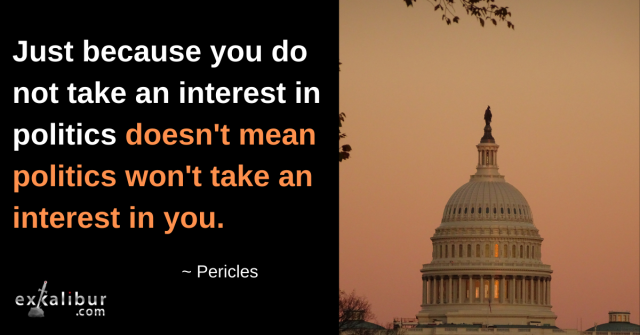
You probably know the answer to that.
Nobody.
You can argue that people can read and make a reasonable choice on a particular issue without the voter guides, but I think you know that given the complexity of many propositions, that’s a specious argument.
And yes, there are TV ads ad nauseum that too many voters rely upon for the information needed to make their decisions. And, how do you decide after you’ve seen ads from both sides of a position?
Good question.
If you live in California in 2024, using my example, you can take your annual 2 week vacation and devote 45 hours/week to get acquainted with your Voting Guides.
Fun, huh?
I rest my case.
